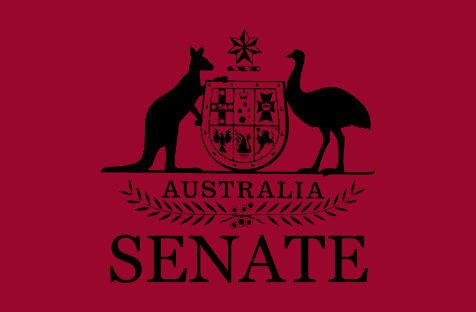How does an arts advocate successfully argue the case before the Senate Inquiry into the Australia Council Bill?
When I appeared recently at the Senate Inquiry into the proposed new Australia Council Bill 2013, which has just released its recommendations, I felt a great weight of responsibility. Not only is the Act setting the parameters of the operation of the peak arts agency in the country possibly for the next 40 – 50 years, but also there were relatively few embedded arts people included in the witness process. Because this is part of a political process where matters of important principle can be at stake, one has to be pretty alert. Asking the questions at the Inquiry were two Liberal Senators: George Brandis, Shadow Minister for the Arts; and Senator Gary Humphries and it was chaired by a non-interventionist ALP Senator Lin Thorpe.
In comparing the way the new Act is written with what the arts sector is asking for in relation to the structure and responsibilities of the Australia Council, it is apparent that it boils down to a difference of approach. The Government maintains that it wants to free up the Council from having a clearly defined artform structure and set of functions while key arts sector representatives want to have the assurance that certain key principles will guide what the Council’s performance can be measured against.
So what to say when Brandis asked me the leading question, “What is wrong with the functions (in the Australia Council Act) as set out in the existing (1975) act? Don’t they address…much better and more comprehensively the issues that the new bill addresses only in part or not at all?” Having consulted with many artists and arts organisation colleagues in preparing a submission, I tried to keep it simple in order for changes to be possible without causing undue delay to the passage of the legislation through parliament.
At the Inquiry I narrowed the requests for change to six, two to governance structures and four to the functions of the Council. In his questions to other witnesses, Brandis had pointed out that without artform board chairs being members of the governing council, the proposed structure could apply just as well to any corporation “the meat and livestock corporation, the Australian Antarctic exploration authority or any agency of the Commonwealth of Australia that you care to imagine.” I agreed the National Association for the Visual Arts (NAVA) had recommended that the majority of the Council’s governing board should be “deeply embedded in the arts industry and have broad experience and knowledge across all the arts”, and we favoured the wording in the old Act which required that they “practice or have practised in the arts”.
I affirmed that NAVA was also concerned to try to see a more specific a commitment made to the peer assessment principle. The process is not specified in the old Act and is very cursory in the new one. Instead NAVA recommended “where committees are responsible for policy development or funding decisions, they shall be made up of peers with appropriate experience for the purpose.”
We then moved on to specified ‘Functions’ of the Council. Firstly we dealt with the ‘excellence’ question. The new Act says that the Council should “support Australian arts practice that is recognised for excellence”. I tried to make the distinction that it should be about promotion, fostering and encouraging the aspiration to be excellent, including investment in risk and experimentation, not just supporting those who have already achieved the standard of national and international recognition.
The freedom of expression issue was of great interest to Brandis where NAVA had recommended that the Council should not only respect freedom of expression in its own work and decision-making, but also should take an active role in promoting those rights in the community. Therefore I said a new clause needed to be inserted in Functions: “to uphold and promote the rights of persons to freedom of expression in the form of the arts”.
While the new Act says the Council should “support a diverse range of activities”, this simply deals with a variety of artform expression while what the arts sector is seeking is a function that recognizes 21st century practices of active community engagement and brings it into line with the national cultural policy which says that government support should “reflects the diversity of Australia and that all citizens, wherever they live, whatever their background or circumstances, have a right to shape our cultural identity and its expression”.
There was “furious agreement” about the need to insert a new clause to recognise, respect and celebrate the centrality of Aboriginal and Torres Strait Islander cultures to the uniqueness of Australian identity to bring it into alignment with Goal 1 of the national cultural policy.
“Anything else you want to say?’ asked the chair. Then suddenly it was all over.
At the time of writing NAVA is awaiting the outcomes of this process. We hope that the Government will see the wisdom of these recommendations in ensuring that the mandate of the Australia Council is ambitious and forward-thinking and able to give effect to encouraging and supporting the best that Australian arts has to offer both to ourselves and to the world.





